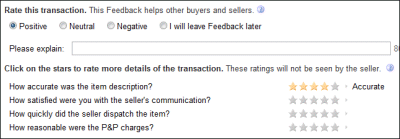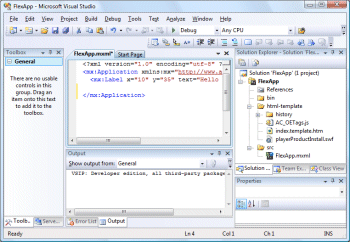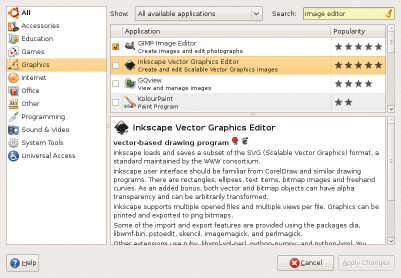New post over at itjoblog.
All posts by onlyconnect
Google search wiki: user reviews for web sites
Google has announced its search wiki.
Do I want to customize my search results? No; or at least, only by refining the search, not by forcing sites to the top or inserting my own urls.
Do I want to comment my search results, just for myself? No. I can’t see myself using this, particularly as I deliberately avoid being permanently logged into Google.
What about public comments and ratings? This is the big deal. I wonder how Google will handle this – will the comments apply to web sites? To web pages? Or only to web pages when shown as results for specific searches? In other words, if I get the same site showing up for a different search, will I see the same comments?
Think Amazon, and how the ratings and reviews influence buying decisions (they certainly influence mine). The impact if people see such feedback every time they search on Google could be remarkable. I would love to see the SEO (Search Engine Optimization) folk advising customers, “Look, you actually have to make your site worth visiting, in order to get good reviews on Google.” Though I guess some of them will just offer to write the reviews.
If this sticks, I will be interested to see how it will affect Google’s relationship with its advertisers. Let’s say you do a product search, and Google displays ads inviting you to buy the product, alongside reader comments saying it is garbage. This tension has always existed in independent press that carries advertisements, but it is new to search. On the other hand, as currently described the SearchWiki comments are not displayed by default, but only if you click a SearchWiki link.
eBay reinvents English language, punishes good sellers
The world’s biggest auction site has implemented a ratings system designed to promote high selling standards. Unfortunately, its effect is to punish good sellers as well as bad.
Here’s how it works. Buyers are invited to leave seller feedback after a transaction ends. They rate the transaction positive, negative or neutral, and then offer “Detailed seller ratings”. Buyers are asked to rate the transaction in four categories: description, communication, speed of dispatch, and fairness of p&p charges:

The difference between a four and five star rating is that for five stars the word “very” is added. For example, for communication you could be “satisfied” or “very satisfied”.
What the buyer does not know is that if the seller gets an average rating below 4.1, they can no longer list items for sale. If they are below 4.3, their listings may be “demoted” in search results. Here is the announcement from ebay.com:
What happens to sellers who do not meet the DSR requirements by November 3, 2008?
Sellers with a DSR below 4.1 will be blocked from listing on eBay.com. Sellers with a DSR below 4.3 but higher than 4.1 may have their listings further demoted in search results.
Sellers caught out by this are furious, partly because a buyer who awards 4 stars in all four categories is likely under the impression that they gave positive feedback. After all, what is the difference between “Accurate” and “Very accurate”? I am likely to do this myself, giving four stars if generally satisfied, and five for exceptional service.
The possibility of a seller getting banned from listing with an average four-star rating would not occur to me.
eBay’s intention seems to be to tilt the balance of its policies away from sellers and towards buyers. Another example of this is that sellers cannot give a fraudulent or unreasonable buyer negative feedback. However, it is the sellers who pay eBay’s fees, not the buyers, and it risks losing the goodwill of its customers.
In eBay-speak then, “satisfied” means “unsatisfied”.
Microsoft plans free anti-malware
Microsoft will be offering a free anti-malware suite codenamed “Morro”, from the second half of 2009, according to a press release:
This streamlined solution will … provide comprehensive protection from malware including viruses, spyware, rootkits and trojans. This new solution, to be offered at no charge to consumers, will be architected for a smaller footprint that will use fewer computing resources, making it ideal for low-bandwidth scenarios or less powerful PCs.
It’s a good move. Here’s why:
- The current situation is calamitous. Even users with fully paid-up anti-virus solutions installed get infected, as I recently saw for myself. PC security is ineffective.
- The practice of shipping PCs with pre-installed anti-virus that has a trial subscription is counter-productive. There will always be a proportion of users who take the free trial and do not renew, ending up with out-of-date security software. A free solution is better – several are available now – if only because it does not expire.
- Microsoft wants to compete more effectively with Apple. It is addressing an extra cost faced by PC users, as well as (possibly) the poor user experience inherent in pre-installed anti-virus trialware.
- The performance issue is also important. Anti-malware software is a significant performance drag. Microsoft is the vendor best placed to implement anti-malware that minimizes the drag on the system.
Counter-arguments:
- Only specialist companies have the necessary expertise. I don’t believe this; Microsoft’s investment in security is genuine.
- Single-supplier security gives malware a fixed target, easier to bypass. There’s some merit to this argument; but it is weakened by the fact that the current multi-vendor scenario is clearly failing. Further, the Mac is a fixed target that does not appear to be easy to bypass.
All of this is hot air compared to the real challenge, which is securing the operating system. Vista is progress, Windows 7 not much different according to my first impressions.
Why not just use another operating system? There’s a good case for it; ironically the theory that a large factor in Windows insecurity is its dominance can/will only be properly tested when an alternative OS is equally or more popular. If people continue switching to Macs perhaps it will happen some day. Windows is still hampered by its legacy, though my impression is that Vista’s UAC is having its intended effect: fewer applications now write to system areas in Windows, bringing us closer to the day when security can be tightened further.
What about business systems? This is one area that needs clarification. Microsoft says Morro is only for consumers. Why should businesses have to pay for a feature that consumers get for free? On the other hand, some equivalent initiative may be planned for business users.
Adobe Alchemy – compile C/C++ to ActionScript
I love the careful wording on Adobe’s Alchemy site:
The purpose of this preview is to assess the level of community interest in reusing existing C and C++ libraries in Web applications that run on Adobe® Flash® Player and Adobe AIR®.
It needs to be put cautiously, because Alchemy – unlike Google Web Toolkit, which handles Java to Javascript – is not intended to become a general-purpose alternative to ActionScript. Rather, the idea is to enable existing C/C++ libraries to work within Flash applications. Examples given include transcoders, cryptographic algorithms, and XML parsers. Performance is said to be 2-10x slower than native code. Alchemy was demoed today at Adobe’s MAX conference.
Possibly a Java to ActionScript compiler would be more useful to most of us; though for new code ActionScript 3.0 is close enough to Java that it should not be difficult for most developers to learn.
Develop for Adobe Flex in Microsoft Visual Studio – or maybe not
News from the Adobe MAX conference this week in San Francisco: Ensemble has developed an add-in for Visual Studio for Flex development, code-name Tofino. It’s currently in beta and available for download. Flex is Adobe’s developer-focused SDK for Flash applications.
I installed it this morning, and so far it does not impress. There is zero documentation (just a few links to the standard Flex docs on Adobe’s site), and it lacks even MXML Intellisense, let alone a visual designer. When you go to project properties, there is nothing to configure. The toolbox is also empty. On the plus side, it successfully invoked the Flex compiler to build the project, and managed to open it as a static file in Internet Explorer when I clicked Debug. I’d prefer an option to use Visual Studio’s built-in web server for debugging. There must be more to it than this; then again it is advertised as a beta which is meant to mean well advanced (ha ha). I suggest sticking firmly with Flex Builder for the time being.

Adobe has largely ignored .NET in its Flex and AIR technology, though it does support SOAP. I am not sure whether this is caused by aversion to Microsoft, or an assumption that Microsoft developers will use Microsoft technologies like Silverlight or Windows Forms, or a bit of both. Integration with Visual Studio and server-side .NET could be significant for Flex adoption, though it would be better if Adobe itself were doing the add-in.
You can see the same thing happening on Microsoft’s side, with a half-hearted Silverlight project for Eclipse (which only works on Windows), or the well-regarded Teamprise which integrates Eclipse with Visual Studio Team System. In both cases Microsoft keeps itself at arms length, which does not have the same impact as in-house support.
There are always concerns about the quality of third-party applications. I am sure Adobe itself would not have put such an inadequate preview up for download, as Ensemble has done for Tofino.
Is easy concurrency the road to hell?
Blog post over at ITJOBLOG. Not an original thought, but I guess it is with the release of .NET Framework 4.0 and its impressive concurrent programming features that we will discover whether such fears are justified.
Sun’s financial problems – what comes next?
Sun has today published a press release announcing that up to 18% of its global workforce is to be cut and that Rich Green, VP of Software, has resigned.
It has also formed a new business group called Cloud Computing & Developer Platforms, for advancing its cloud services efforts.
Sun is a fascinating company, with serious commitment to open source. It is also the steward of Java, MySQL and OpenOffice.org. Despite the software aspect, selling servers is a core part of its business, and its problems now (in my quick opinion) are a consequence of the economic downturn, a trend towards cheap-and-many in the server market, and a rush towards open source without any clear strategy over how to monetize it. No, I don’t believe turning runtime and application downloads into foistware and adware is the solution.
Somehow, Sun allowed competitors such as IBM and Oracle to benefit from Java without reaping equal rewards itself. It is great at innovating but less good at profiting from its invention. Java applets were the first browser-hosted client applications, but Sun did not see the need for something like JavaFX until Adobe Flash and then Microsoft Silverlight showed how this needed to evolve; now it is probably too late.
Another example is utility computing (one aspect of cloud computing), which Sun pioneered with its Grid initiative; but others such as Amazon are now setting the pace in this area.
What comes next – acquisition, recovery, or continued decline?
OpenOffice to become adware?
From Jonathan Schwartz’s blog:
An auction’s afoot … to see who we’ll be partnering with us to integrate their businesses and brands into our binary product distribution – the possibilities are limitless: people tend to print those documents, fax them, copy them, project them (and I know this annoys my friends in the free software community, but branding allows us to invest more in OpenOffice.org community and features, from which everyone benefits).
An alarming prospect. But OpenOffice.org is meant to be free and open source. What does Schwartz mean by “our binary distribution”? Note he says OpenOffice.org not Star Office, Sun’s commercial version.
I presume it will be possible for others to step in and offer branding-free distributions of OpenOffice. I’ll go for those, thanks very much.
Contributors to OpenOffice.org put their trust in Sun and even assigned their copyright, supposedly to protect the open source status of the code. If Sun commercialises the free distribution (it can do what it likes with Star Office), that strikes me as stretching the limits of what people understand by free software.
If Sun, by Schwartz’s own admission, is willing to “annoy” its friends in the free software community, OpenOffice.org will lose a lot of momentum – I foresee forks and anger. A good day for Microsoft Office.
Then again, I may have misunderstood. I’m seeking clarification.
Reasons to love Linux #1: package management
I posted recently about a difficult Ubuntu upgrade, drawing the comment “What do you prefer to do on Linux that you don’t on Windows?”
Today I patched the Debian server which runs this blog. APT upgraded the following applications:
MySQL 5
Apache 2.2
Time Zone data (tzdata)
Some of these involve several packages, so 16 packages were updated.
Bear in mind that this is a running system, and that MySQL and Apache are in constant heavy use, mostly by WordPress.
I logged on to the terminal and typed a single command:
apt-get upgrade
The package manager took less than a minute to upgrade all the packages, which had already been downloaded via a scheduled job. Services were stopped and started as needed. No reboot needed. Job done.
I guess a few people trying to access this site got a slow response, but that was all.
Now, how long would it take to upgrade IIS, SQL Server and some server anti-virus package on Windows? What are the odds of getting away without a restart?
Admittedly this is not risk-free. I’ve known package management to get messed up on Linux, and it can take many hours to resolve – but this usually happens on experimental systems. Web servers that stick to the official stable distribution rarely have problems in my experience.
I realise that the comment really referred to desktop Linux, not server, and here the picture is less rosy. In fact, this post was inspired by a difficult upgrade, though in this case it was the entire distribution being updated. Even on the desktop though, the user experience for installing updates and applications is generally much better.
Let’s say I’m looking for an image editor. I click on Add/Remove and type a search:

I like the way the apps show popularity. I’d like a few more things like ratings and comments; but it’s a start. Inkscape looks interesting, so I check it, click Apply Changes, and shortly after I get this dialog:

I double-click, and there it is:

I admit, I did take a few moments to download an example SVG file from the W3C, just to make the screen grab look better. But provided you have broadband, and the app you want is in the list, it is a great experience.
Windows Vista has had a go at this. From Control Panel – Programs and Features you can get to Windows Marketplace, where you might search and find something like The Gimp (free) or Sketsa SVG Editor (costs). I tried The Gimp, to be more like-with-like. I had to sign in with a Live ID even though it is free. I went through several web dialogs and ended up with a download prompt for a zipped setup. That was it.
In other words, I went through all these steps, but I still do not have The Gimp. OK, I know I have to extract the ZIP and run the setup; but Ubuntu’s Add/Remove spares me all that complication; it is way ahead in usability.
App Store on the iPhone also has it right. For the user, that is. I detest the lock-in and the business model; but usability generally wins. The online stores on games consoles, like XBox Live Marketplace, are good as well. I guess one day we will install or buy most applications this way.